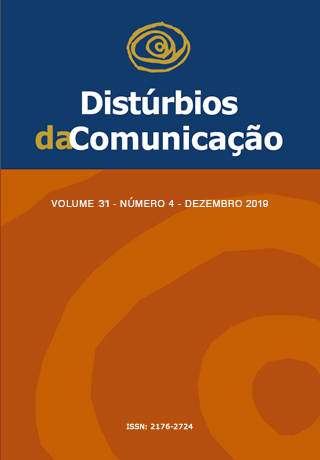Evaluation of Children with Risk Indicators for Hearing Loss in a Newborn Hearing Screening Reference Service
DOI:
https://doi.org/10.23925/2176-2724.2019v31i4p630-640Keywords:
Newborn Screening, Hearing, Hearing Loss, Infant, Risk IndexAbstract
Objective: To evaluate the hearing of children with risk indicators for hearing loss who underwent newborn hearing screening and returned to follow up after six months. Methods: Longitudinal study conducted at the Newborn Hearing Screening Service of a university hospital with children with risk indicators for hearing loss. The study was performed in two stages: test and retest (when necessary) and follow-up (at six months). Results: 179 children were evaluated in the screening. In this stage there was an association between “failed” result in both ears and suspected syndrome and “failed” result and cytomegalovirus. In all the stages, 12 children presented conductive alterations confirmed by the immittanciometry and none presented sensorineural alteration. Conclusion: Conductive hearing loss was more present in this population. No sensorineural hearing loss was detected in any child evaluated during the study period; therefore the auditory monitoring of these children should be performed until later ages to detect any progressive or late-onset hearing loss.Downloads
Metrics
Downloads
Published
How to Cite
Issue
Section
License
Copyright (c) 2020 Ana Luiza de Freitas Rezende, Luciana Macedo de Resende, Elaine Alvarenga de Almeida Carvalho, Paul Avan, Sirley Alves da Silva Carvalho

This work is licensed under a Creative Commons Attribution 4.0 International License.






